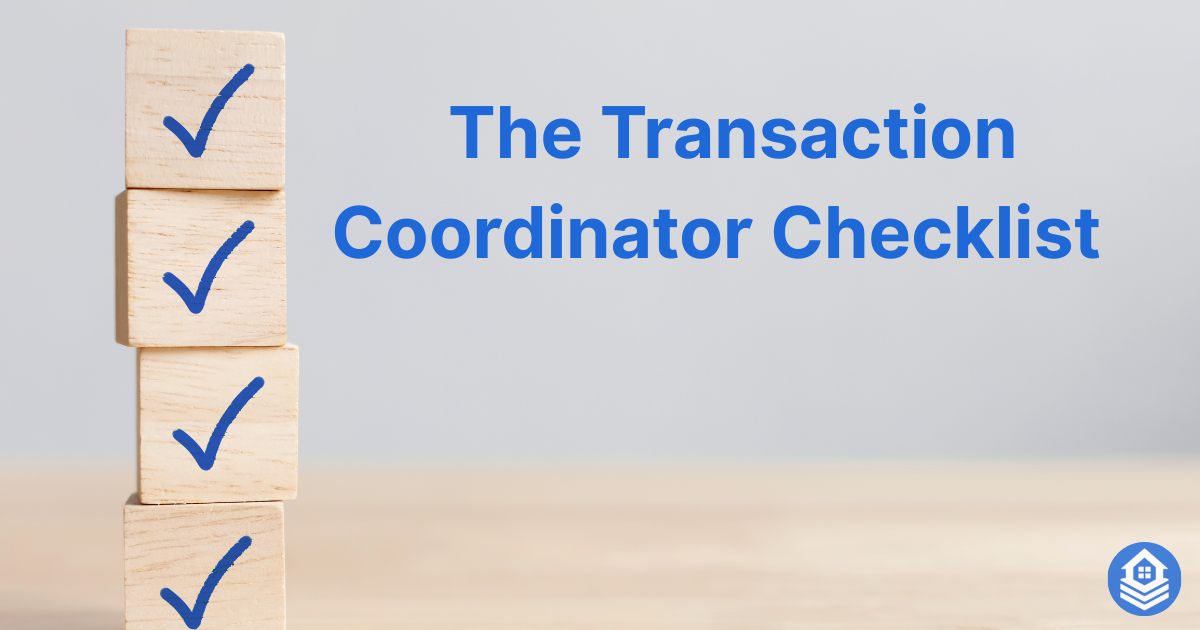Getting your buyer pre-approved for a mortgage is the single most important early step in any residential transaction. A solid pre-approval letter tells sellers you’re serious, helps your agent negotiate from strength, and gives your client clarity on budget. As a Transaction Coordinator, your job is to make sure no critical document falls through the cracks—because one missing W-2 or bank statement can delay underwriting by days (or even sink a deal).
Below is the complete checklist you can use for every purchase pre-approval, organized by category. Share it with agents and clients to streamline intake, reduce back-and-forth, and keep your pipeline flowing.
1. Identity Verification
-
Government-Issued Photo ID
- Driver’s license or passport (front & back).
- Ensures borrower identity and matches credit report.
-
Social Security Number
- SSN card or written disclosure on application.
- Needed for credit pull and IRS validation.
2. Income & Employment
-
Last 2 Years of W-2 Forms
- All employers listed on each federal tax return.
- Underwriters use these to verify consistent income.
-
Last 30 Days of Pay Stubs
- Year-to-date earnings clearly displayed.
- Demonstrates current employment status and stability.
-
Self-Employed Borrowers
- 2 Years of Personal & Business Tax Returns (Form 1040, Schedule C).
- Profit & Loss Statement signed by borrower.
- Business License or Articles of Incorporation (if applicable).
-
Offer Letter or Employment Verification
- Recent hires need a signed letter stating start date, position, and salary.
- Must be on company letterhead and signed by HR or hiring manager.
3. Asset Documentation
-
Last 2 Months of Bank Statements
- Checking, savings, money market accounts.
- All pages—even blank ones—to confirm reserves and funds for down payment.
-
Retirement & Investment Accounts
- 1099 statements or quarterly statements for 401(k), IRA, brokerage.
- Underwriters want to see liquid reserves and seasoning periods.
-
Gift Funds (if applicable)
- Gift Letter signed by donor, indicating no repayment required.
- Bank Statement from donor source showing funds transfer capability.
4. Property & Transaction Details
-
Purchase Agreement (Signed)
- Fully executed contract with all addenda and riders.
- Needed to calculate loan-to-value (LTV) and verify sales price.
-
MLS Listing or Property Description
- Details on property type, address, and listing agent.
- Helps lender categorize loan type (e.g., FHA, conventional, VA).
-
Estimated Closing Costs Worksheet
- Worksheet from lender or title company.
- Verifies borrower understands cash-to-close requirements.
5. Credit & Liabilities
-
Credit Explanation Letters
- For any late payments, collections, or charge-offs on credit report.
- Borrower-prepared letters explaining circumstances and resolution.
-
Bankruptcy / Foreclosure Documents
- Discharge papers or settlement statements.
- Must meet seasoning requirements (typically 2–4 years).
-
Child Support / Alimony Orders
- Court orders and proof of payment history.
- Underwriters include these as debt obligations.
6. Additional Considerations
- Divorce Decree & Property Settlement
If alimony or asset transfers are involved, include the official court documents. - Rent History
For first-time buyers with limited credit, a rent ledger or cancelled checks can demonstrate payment consistency. - Gift Tax Returns (Form 709)
May be required if gift funds exceed annual exclusion limits.
7. Pro Tips for Smooth Intake
- Bundle & Label Everything
Create a single PDF (or folder) per category: “Income,” “Assets,” “Liabilities,” etc. - Redact Sensitive Info
Mask full account numbers—only last four digits need to show. - Use a Secure Portal
Send an upload link via encrypted email or your TC software so documents aren’t lost in inbox spam filters. - Double-Check Dates
Ensure statements and tax returns align with the exact time frames lenders require.
8. Workflow Example
- Initial Submission
- Agent or borrower uploads all items via your intake portal.
- Automated checklist in your TC software flags any missing docs.
- Document Review
- TC verifies completeness, redacts where necessary, and tags each file.
- Lender Delivery
- Package everything as a secured ZIP or send via lender portal.
- Track delivery confirmation and follow up within 24 hours.
Conclusion
Having a standardized, end-to-end checklist for mortgage pre-approval saves hours of back-and-forth and dramatically cuts underwriting delays. By making it easy for agents and borrowers to supply exactly what lenders need, you position yourself as a top-tier Transaction Coordinator who can scale without sacrificing quality.
If you’re ready to automate this intake process—complete with built-in reminders, secure document uploads, and compliance checks—take DocJacket for a spin. Our AI-powered platform turns any contract into a custom checklist in under a minute, syncs deadlines to Google Calendar, and keeps every file audit-ready. Try it free and see how much time you can reclaim.




